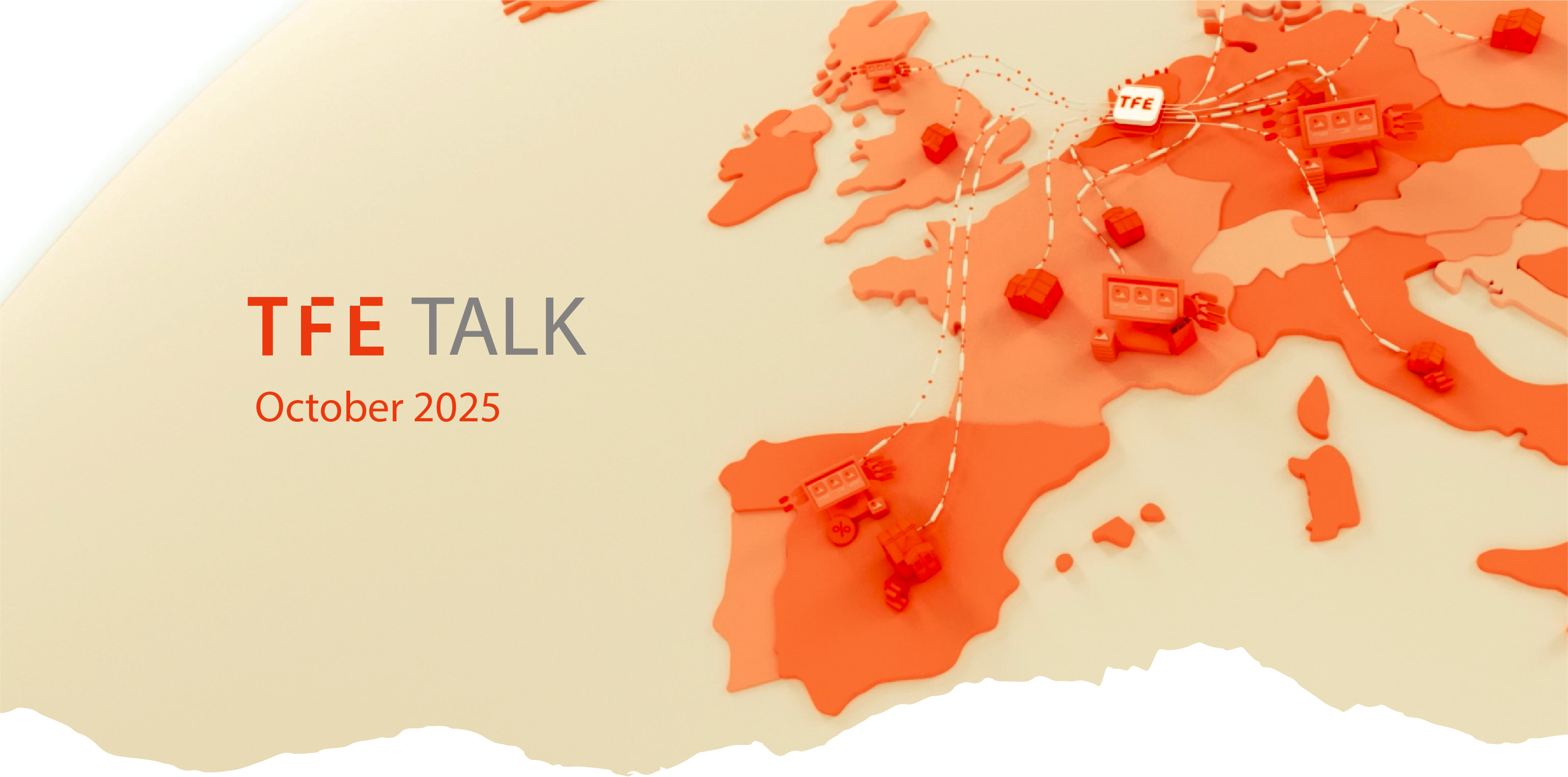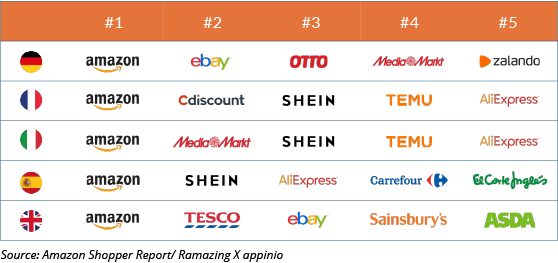
TFE Talk – October 2025
The comeback edition: Marketplaces, growth, and digital transformation shaping Europe’s eCommerce future 🚀
After a brief pause, TFE Talk is back — and so is our monthly roundup of marketplace insights, European eCommerce trends, and the strategic shifts defining the industry’s next chapter.
October 2025 brings an exciting mix of growth stories, regional transformations, and renewed competition among major players like Amazon, Allegro, and Google.
Let’s dive in. 👇
1. Allegro Q2 2025 – Growing at Home, Accelerating Abroad
Allegro continues to shine as one of Europe’s strongest marketplace success stories. Its Q2 2025 report highlights steady growth in Poland and rapid expansion across Central Europe.
🇵🇱 In Poland:
- GMV up +9.8% YoY, nearly double national retail growth.
- Revenue increased +18% YoY, with advertising soaring +30%.
- 15.2M active buyers, adding 300k in a single quarter.
- Smart! Week broke sales and engagement records.
🌍 International Expansion:
- GMV in Czechia, Slovakia, and Hungary grew +61% YoY.
- Nearly 4M active buyers outside Poland (+57% YoY).
- Smart! surpassed 1M international users.
- Mall North’s transformation into a leaner 1P model reduced costs and improved margins.
💡 Big picture: Allegro’s EBITDA rose +20% YoY, leverage dropped to 0.72x, and 2025 guidance was raised for both revenue and profitability.
The takeaway: Allegro proves that combining strong domestic leadership with disciplined international expansion fuels sustainable growth.
2.Europe’s E-commerce 2025: From Expansion to Evolution
The European E-commerce Report 2025 reveals a market that keeps growing — but not like before. After years of explosive expansion, the continent’s online retail landscape is entering a new era: one defined by smarter growth, deeper engagement, and sustainable innovation.
1️⃣ From Hypergrowth to Smart Growth
In 2024, Europe’s B2C e-commerce turnover rose 7%, from €765B to €819B, and is projected to reach €875B in 2025 (+4%). Western Europe, still the powerhouse with €466.5B, grew modestly (+5%), while Southern (+9%), Central (+8%), and Eastern Europe (+18%) accelerated.
The message is clear: the next chapter isn’t about scale — it’s about strategy.
2️⃣ Spending, Not Shoppers, Drives the Market
Between 2020 and 2025, Europe added just +52M e-shoppers, yet average spend per person rose by €467 — from €1.51K to €1.98K.
This means Europeans are buying more, more often, and across more categories — from essentials to experiences.
3️⃣ A Saturated but Smarter Market
With 94% internet penetration und 73% of Europeans shopping online, digital adoption is near its limit. Countries like Denmark, Switzerland, the Netherlands, and Norway have reached 100% connectivity.
Future growth will come not from adding users, but from enhancing trust, personalization, and circular value models.
4️⃣ Regional Shifts: East and South Rise
While Western Europe accounts for 57% of total turnover, Eastern Europe — with only 2% of total spend but 20% of e-shoppers — represents the next frontier. As logistics, digital payments, and consumer trust advance, the East’s acceleration could redefine the European map of online retail.
5️⃣ Inflation Cools, Confidence Returns
With inflation dropping from 6.1% (2023) to 2.6% (2024), real e-commerce growth reached +4.2%. Consumers regained confidence, shifting from caution to considered value — opting for refurbished goods, flexible delivery, and sustainable packaging.
6️⃣ A Market of Challenges and Chances
E-commerce in Europe is maturing — and with maturity comes complexity.
SMEs face new regulatory and tax hurdles, while non-EU competitors continue to test fair competition standards. Yet innovation thrives: AI-driven personalization, urban logistics, and green fulfillment networks are transforming how Europeans buy and brands deliver.
💬 The Big Picture
Europe’s e-commerce story is no longer about more users — it’s about more value per user.
In a market approaching digital saturation, connection becomes the new conversion.
Growth now depends on how brands listen, adapt, and deliver experiences that matter — responsibly, locally, and sustainably.
3. 🇧🇪 Amazon and Google Bet Big on Belgium
Two global giants have chosen Belgien as their next digital stronghold:
- Amazon: €1 billion investment (2025–2027), its largest in Belgium.
- Google: €5 billion expansion (2026–2027), bringing total investment to €11B since 2007.
Both aim to develop AI services for SMEs, data centers, and renewable infrastructure — a major boost for the European tech ecosystem.
Meanwhile, Belgium is proposing a €2 parcel tax on low-value imports (<€150) from non-EU platforms (Temu, Shein, Alibaba) to promote fair competition and sustainability.
💡 Why it matters:
- Thousands of jobs will emerge by 2027.
- Stronger digital and logistics networks for SMEs.
- Regulatory debates over competitiveness, taxes, and working conditions intensify.
4. Amazon Still Wears the Crown — Across All Markets
The 2025 Remazing x Appinio Shopper Report confirms it: Amazon remains #1 in every major global market, with 95% of consumers making at least one purchase on the platform.
Even as Temu and Shein gain ground in France, Italy, and Spain, Amazon’s formula — price + speed + trust — keeps it at the top.
Yet, a shift is underway:
- 67% of Spanish und 45% of French shoppers have bought from Alibaba.
- Price sensitivity and variety are redefining loyalty.
💬 Key takeaway: Europe’s eCommerce is no longer just Amazon vs. everyone else — it’s a battle of value vs. experience.

5. 🌐 Cross-Border Marketplaces Take the Lead
Cross-Border Commerce Europe’s 2025 report reveals that cross-border eCommerce hit €358.7B, with 70% (€247.5B) coming from marketplaces.
🏆 Top 10 Cross-Border Marketplaces
Amazon · Temu · eBay · AliExpress · Etsy · Vinted · OLX · Zalando · Decathlon · Shein
Marketplaces are now the operating system of global commerce — shaping logistics, pricing, and marketing strategies across borders.
Why It Matters:
- 98% of marketplace traffic in 2026 will be cross-border.
- Europe’s cultural and regulatory diversity remains complex — but full of opportunity.
- Hybrid models (1P + 3P) are redefining scalability and seller ecosystems.
💬 Questions to reflect on:
- Will marketplaces continue to dominate, or will D2C regain space?
- Which model — Amazon’s scale, Zalando’s specialization, or Vinted’s circular approach — is most sustainable?
At TFE Agency, we believe: understanding the model, data, and regulations is what makes the difference between selling more — and selling smarter.
Final Thought
The comeback of TFE Gespräch marks a renewed focus on sharing insights that help brands, entrepreneurs, and partners navigate Europe’s evolving digital economy.
From marketplace strategy to regional growth shifts, one thing is clear: eCommerce isn’t slowing down — it’s evolving.
💬 What trend stood out to you this month? Share your thoughts and let’s discuss the future of European marketplaces together.
